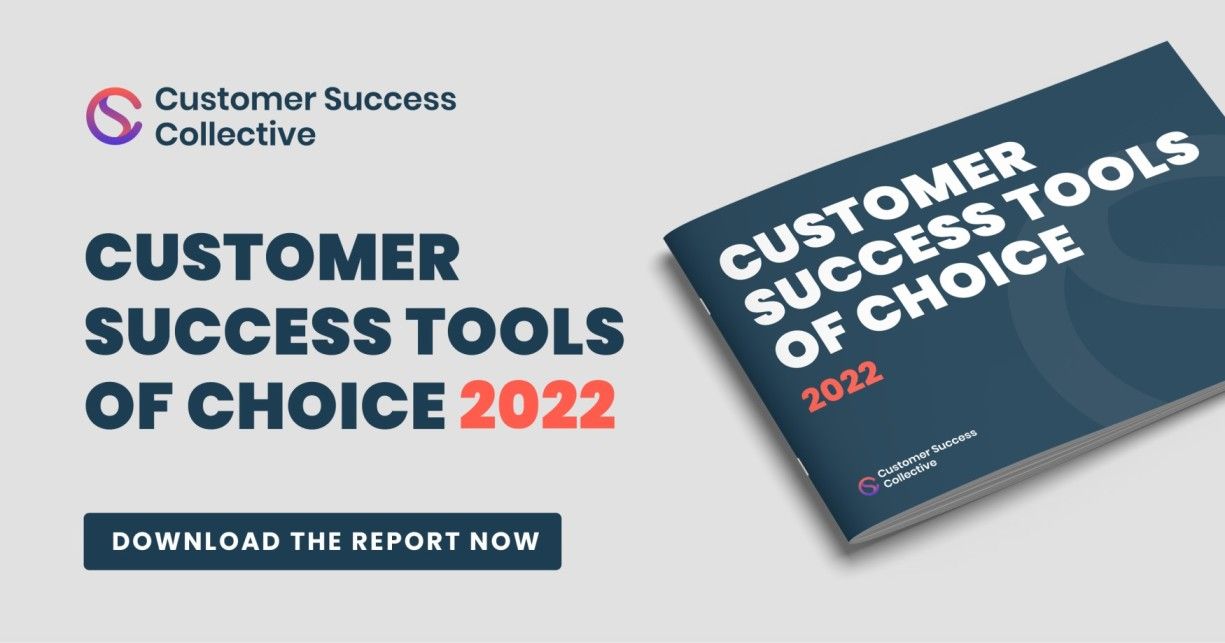The overarching goal of any customer success function is to provide your customers with the best possible experience that’ll help them realize your product or service’s value, and reach their desired outcomes with said product or service.
Sure, it sounds simple enough, but the only way for this ethos to be reflected in every customer interaction is if it’s a part of your company’s culture. This is where first-rate leadership comes into play.
As a customer success leader, there’s a responsibility to set the standard through your actions. A junior member of staff can try to impact or change their company’s culture, but fundamentally, any big change needs to come from the top.
To ensure each customer interaction counts and your whole company recognizes and values each customer interaction, this needs to come from the C-suite.
In this article, we’re going to cover:
- What work culture is, and why it’s important,
- The importance of every customer interaction,
- Ways to build a customer-centric culture,
- How to empower your employees and set them up for success, and
- How to measure success and continued improvement.
Now, let’s get down to business.
What is a “work culture” and what is customer-centricity?
To kick things off, it’d serve this article best if we first explained the importance of a positive, encouraging work culture. But what do we mean when we refer to a “culture”?
Work culture is the type of environment that exists within an organization, usually reflective of shared values, and beliefs that shape the normal run of things in a company. Here are some examples of work cultures:
- Positive, friendly, and dynamic work cultures. These promote innovation, well-being, collaboration and retention.
- “Fast-paced” work cultures tend to cultivate agility and adaptability, resilience, collaboration and continuous learning.
- Work cultures fostered around diversity, equity and inclusion (DE&I) signal to employees that a company values equal opportunities and creates a workforce that reflects the broader society of different backgrounds, experiences, perspectives, and identities.
- In toxic work cultures, where employees feel the pressure to over-perform, there are cases of micromanagement, lack of recognition, and bullying.
It’s up to the senior leadership team or the C-suite to set a healthy, supportive, and positive work culture in order to get the best work out of staff.
But why are we talking about work culture in an article related to customer-centric strategies? As a customer success leader, you not only have influence over the day-to-day work culture that affects your employees – that's a given. You’re in a unique position to be able to impact the lives of your customers too – whether that figure's in the thousands, millions, or billions.

Why is a customer-centric work culture important?
As a customer success professional, your natural propensity is to focus on the customers themselves. But not every function within your business will necessarily be constantly thinking of the customer. In some companies, the big drive is the product itself, or perhaps the number of sales made. A company could be community-led (much like a little-known customer success community 👀).
When you put your customer at the forefront of every business decision, in every department – regardless of KPIs and responsibilities – then the customer's own eventual success becomes an increasingly realistic prospect.
If you can make customer-centricity and empathy an integral part of your company’s culture, it can really give your organization an edge in terms of customer conversion and retention.
The importance of every customer interaction
Customer interactions play a pivotal role in delivering exceptional service and building strong relationships with your customers. Each interaction provides an opportunity to create a positive impression, address customer needs, and exceed their expectations.
When your employees understand the significance of these interactions and are empowered to provide outstanding service, it can have a profound impact on overall customer satisfaction and loyalty.
Senior customer success leaders have a crucial role to play in building a customer-centric culture that emphasizes the importance of each customer interaction. How? By setting the right example and establishing clear expectations, they can inspire their teams to prioritize customer satisfaction and go above and beyond to meet customer needs.
Understanding the value of each customer interaction
It might sound trite, but it's worth noting for clarity:
Every customer interaction holds value and can influence the customer's perception of your organization.
Most companies will agree with this, but whether its culture reflects the gravitas of this realization is another matter entirely.
Whether it's a simple inquiry, a support request, or a strategic conversation, there’s no escaping from the fact that every single touchpoint contributes to the overall customer experience. Recognizing the impact of these interactions is essential for cultivating a culture that values customer-centricity.
By understanding the value of each interaction, you can emphasize the importance of delivering exceptional service at every opportunity. This mindset should permeate throughout the entire organization, from the leadership team to frontline employees.

Identifying touchpoints throughout the customer journey and their significance
To truly build a customer-centric culture, it's important to identify the key touchpoints throughout the customer journey and understand their magnitude. From the first point of contact to post-purchase support, each one of these touchpoints presents a unique opportunity to engage with the customer and deliver the value that was promised pre-conversion.
When you pinpoint these critical touchpoints, your employees will be made aware of the moments that matter most to customers. This knowledge enables you to tailor your interactions, provide personalized experiences, and demonstrate a deeper understanding of your customers’ needs.
Utilizing data and analytics to measure and evaluate the quality of customer interactions
Your customers won’t realize value and your department won’t be a revenue driver without marrying the two pillars of customer success. Just like PB and J are a match made in sandwich heaven, so are empathy and data to customer success.
No matter how you cut it, data and analytics play a huge role in building a customer-centric culture.
By leveraging your customers’ data, you can gain insights into the quality of interactions, identify areas for improvement and feed this information back to your product development team. There are some key metrics you can start adopting, such as customer satisfaction scores, response times, and resolution rates, which can provide invaluable feedback on the effectiveness of customer interactions.
It’s worth pausing here to note that while having this data is just one part of the game – acting on it via analysis is the most important part. When you analyze this data, it allows you to measure the success of your customer-centric initiatives and make data-driven decisions to enhance the customer experience.
Regular evaluation of customer interactions enables you to identify patterns, trends, and areas of excellence, which can be used to shape training programs, refine processes, and continuously improve service delivery.
Four ways you can build a customer-centric culture
1. Define a clear vision and mission centered around customer satisfaction
To build a customer-centric culture, it’s essential to define a clear vision and mission that revolves around customer satisfaction. This vision should be communicated throughout the organization, emphasizing the importance of putting the customer at the forefront of every decision and action.
A customer-centric vision provides a shared purpose and direction, aligning employees around a common goal. It sets the tone for the organization's culture and serves as a guiding principle for decision-making at all levels.
2. Communicate the importance of customer-centricity to the entire organization
This one will never get old: effective communication is key to fostering a customer-centric culture.
It’s essential to clearly articulate the importance of customer-centricity to every member of the organization. This communication should emphasize how each employee contributes to the customer experience and how their efforts directly impact customer satisfaction and loyalty.
Leaders should regularly communicate the organization's commitment to customer-centricity, share success stories, and highlight the positive outcomes that result from prioritizing the customer. This constant reinforcement helps create a shared understanding and reinforces the significance of customer interactions.
3. Encouraging cross-functional collaboration and knowledge sharing
Michael Jordan once famously noted that "Talent wins games, but teamwork and intelligence win championships." And he’s not wrong. 🏀
Collaboration and teamwork are an organization’s magic formula for success. When departments work together, share knowledge and break away from the silos that can unfortunately start to form, they can provide a seamless and consistent experience for customers.
Your best jumping-off point to get your employees to fully grasp the significance of customer-centricity is by showing the value of what each other department does. This way, they’ll have a well-formed understanding of each customer interaction your company has.
When pooling together insights, statistics and notes, employees can leverage their collective expertise and insights to better understand customer needs and address challenges effectively.
4. Aligning internal processes to support a customer-focused approach
This one might be best addressed to your operations team, but building a customer-centric culture requires aligning internal processes and policies to support a customer-focused approach. This can seem mundane, but it’s integral to long-lasting, systemic change. It can involve reviewing existing practices and identifying areas where changes can be made to enhance the customer experience.
By streamlining your internal processes and removing unnecessary archaic barriers, you improve service delivery and set your employees up to make decisions that’ll benefit the customer tenfold.

Empowering employees to embody customer-centric values
The term “empower” gets thrown around a lot these days, but what does it really mean?
We’re of the belief that empowerment means providing someone with the confidence and authority to carry out a task. If you’re in the business to make your company customer-centric, you won’t stand a chance if your employees aren’t onboard and, perhaps more pressingly, have the right infrastructure to enact this ethos.
Empowering employees starts with hiring and training individuals who align with the organization's customer-centric values. During the hiring process, look for candidates who demonstrate empathy, excellent communication skills, and a genuine passion for delivering exceptional service.
Once hired, provide comprehensive training programs that focus not only on product knowledge but also on vital skills, such as active listening, problem-solving, and empathy. This investment in employee development sets the foundation for a customer-centric culture.
Providing ongoing training and professional development opportunities
Empowerment is an ongoing process that requires continuous learning and development. Provide employees with regular training sessions and professional development opportunities to enhance their skills and keep them updated on industry trends and best practices.
Encourage employees to seek feedback, participate in workshops and conferences, and pursue relevant certifications. By investing in their growth, you empower them to provide exceptional service and develop as customer success professionals.
Encouraging autonomy and decision-making authority at all levels
Empowering employees means granting them the autonomy and decision-making authority to serve customers effectively. Trust your employees to make decisions aligned with the organization's values and provide them with the necessary support and resources to do so.
By empowering employees to take ownership of customer interactions and make decisions that benefit the customer, you foster a sense of ownership and accountability. This autonomy leads to increased employee satisfaction and enables them to deliver personalized and impactful experiences.
Recognizing and rewarding exceptional customer service efforts
Recognition and rewards are powerful tools for reinforcing a customer-centric culture. When you acknowledge and celebrate employees who consistently go above and beyond to deliver exceptional service and are responsible for outstanding customer interactions, you foster a culture of excellence that inspires others to follow suit.
Whether this is through peer nominations, customer feedback, or performance metrics, a great way to empower your employees is by publicly recognizing these employees and rewarding their efforts.
Creating the right systems
Implementing a customer relationship management (CRM) system to track interactions
To effectively manage and track customer interactions, implement a robust CRM system and you’ll be laughing your way down Retention Road (population: your CS team 😉). You’ll know that a CRM provides a centralized platform to record and analyze customer interactions, ensuring that no valuable information slips through the cracks.
But a powerful CRM system that works with your business model and size will allow your employees to access customer data, history, and preferences, and provide them with the ability to personalize all customer interactions and provide proactive support. It also facilitates collaboration among teams, allowing for a seamless handoff of information and ensuring continuity in the customer experience.

Utilizing technology for customer feedback and sentiment analysis
Technology can play a significant role in gathering customer feedback and sentiment analysis. Implement tools and platforms that enable customers to provide feedback easily, such as surveys, online reviews, and social media listening.
Leverage sentiment analysis tools to monitor customer sentiment and identify areas where improvements can be made. These insights help you understand customer perceptions and make data-driven decisions to enhance the customer experience.
Providing employees with access to relevant customer information and insights
Empower your employees with access to relevant customer information and insights. This can include data on customer preferences, previous interactions, and any specific needs or challenges they may have encountered.
By equipping employees with this information, you enable them to provide personalized and proactive support, anticipating customer needs and exceeding expectations. Access to customer insights empowers employees to deliver tailored solutions that drive customer success.
Measuring success and continuous improvement
Establish KPIs to measure customer satisfaction and service quality
Measuring success in a customer-centric culture requires establishing key performance indicators (KPIs) that focus on customer satisfaction and service quality. These KPIs can include metrics such as customer satisfaction scores, net promoter score (NPS), customer retention rate, and customer lifetime value.
Regularly monitor and evaluate these metrics to assess the impact of customer interactions and the effectiveness of your customer-centric initiatives. Use the data to identify areas for improvement and set goals to drive continuous enhancement of the customer experience.
Gathering customer feedback
Direct customer feedback is invaluable for understanding their needs, preferences, and satisfaction levels. Implement surveys, conduct interviews, and leverage social listening tools to gather feedback from your customers.
Encourage customers to share their thoughts and suggestions, and actively listen to their feedback. Analyze the feedback to identify trends, pain points, and areas of improvement. This customer-centric approach ensures that you are continuously aligned with their needs and expectations.
Analyzing customer data, feedback and customer interactions via metrics will identify areas for improvement, allow you to implement necessary changes and gain insights into the customer experience. What’s more, you’ll ensure your organization is consistently evolving to meet customer needs.

Overcoming challenges and roadblocks
When you’re beginning to implement a customer-centric culture, you may face resistance from employees who’ve become accustomed to existing practices or are perhaps reluctant to change. This is natural, and a very common theme in change management. You can overcome this resistance by fostering a customer-centric mindset through communication, training, and leading by example.
When you’ve got employees who are taking more persuading to come round to these new systems, try to emphasize the benefits of a customer-centric approach, such as improved customer satisfaction, increased loyalty, and business growth. You can support these employees by offering resources to help them adapt to new ways of working and create a supportive environment that encourages experimentation and learning.
Resource constraints and budget limitations
Unfortunately, like many other aspects of life, lack of money can be a real blocker for realizing your goals. And in businesses, resource constraints and budget limitations can present challenges in building the customer-centric culture of your dreams. But it’s not all doom and gloom! You can harness creativity and prioritization to overcome these pesky financial obstacles.
One way to get around a less-than-ideal budget is to proactively identify cost-effective initiatives that’ll have a significant impact on the customer experience. After all, you, the CS leader, are most in-tune with the customer’s thoughts and desires. You know what they’re after. Let the rest of the C-suite know that.
You can focus on training and development programs that empower employees to provide exceptional service without requiring substantial financial investments. Seek opportunities to leverage technology and automation to streamline processes and maximize efficiency.
Okay, let’s wrap things up
Delivering exceptional service through every single customer interaction is a central tenet of any successful business. But building a customer-centric culture can only be achieved if your whole company is behind this ethos.
By recognizing the value of each customer interaction, identifying key touchpoints, and leveraging data and analytics, organizations can continuously improve the quality of customer interactions.
As a CS leader, you have your ear to the ground of every post-sales interaction. You live and breathe helping your customers, by understanding their feedback and walking them through your product’s uses. It’s therefore integral that customer success leaders can define a clear vision and mission centered around customer satisfaction, aligning internal processes and policies, and empowering employees through hiring, training, autonomy, and recognition.
By utilizing the right systems and measuring success, organizations can overcome challenges, continuously improve, and provide exceptional service that drives customer success.
We’ve said it once, but we’ll say it again. We’ll say it until the cows come home:
Through customer-centricity, organizations can foster strong relationships, inspire customer loyalty, and differentiate themselves in today's competitive landscape. Empower your employees and they’ll take care of your customers.

Secure your seat at the big table.
So much of your time is spent grafting to make your customers realize value, why not invest the same in yourself?
Whether you’re a Director or VP of Customer Success, the C-suite Masterclass is your answer to professional progression.
If you’re serious about taking your career to lofty heights, this certification will certainly help expedite your career by offering you strategies, insights, and skills necessary to take a seat at the big table.



 Follow us on LinkedIn
Follow us on LinkedIn




